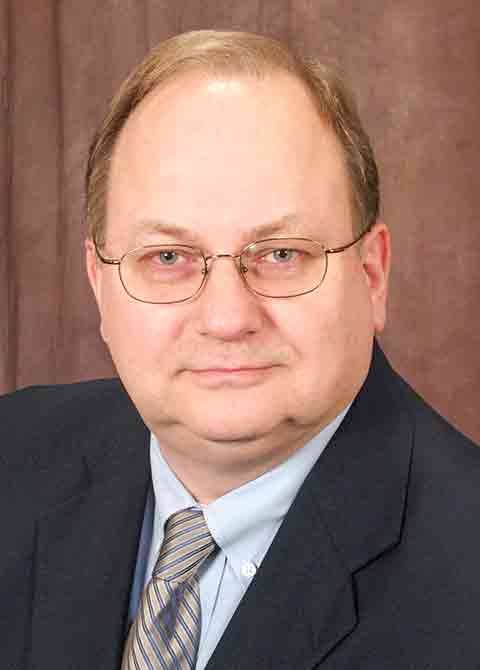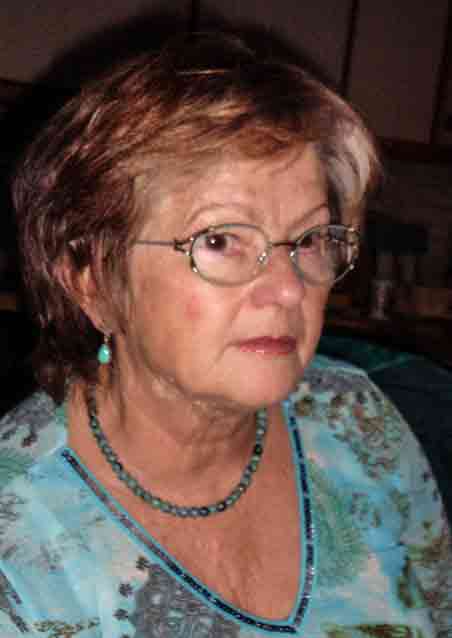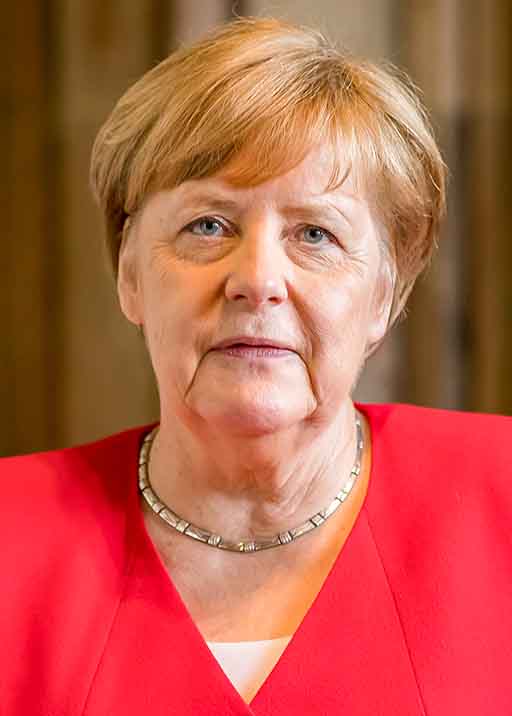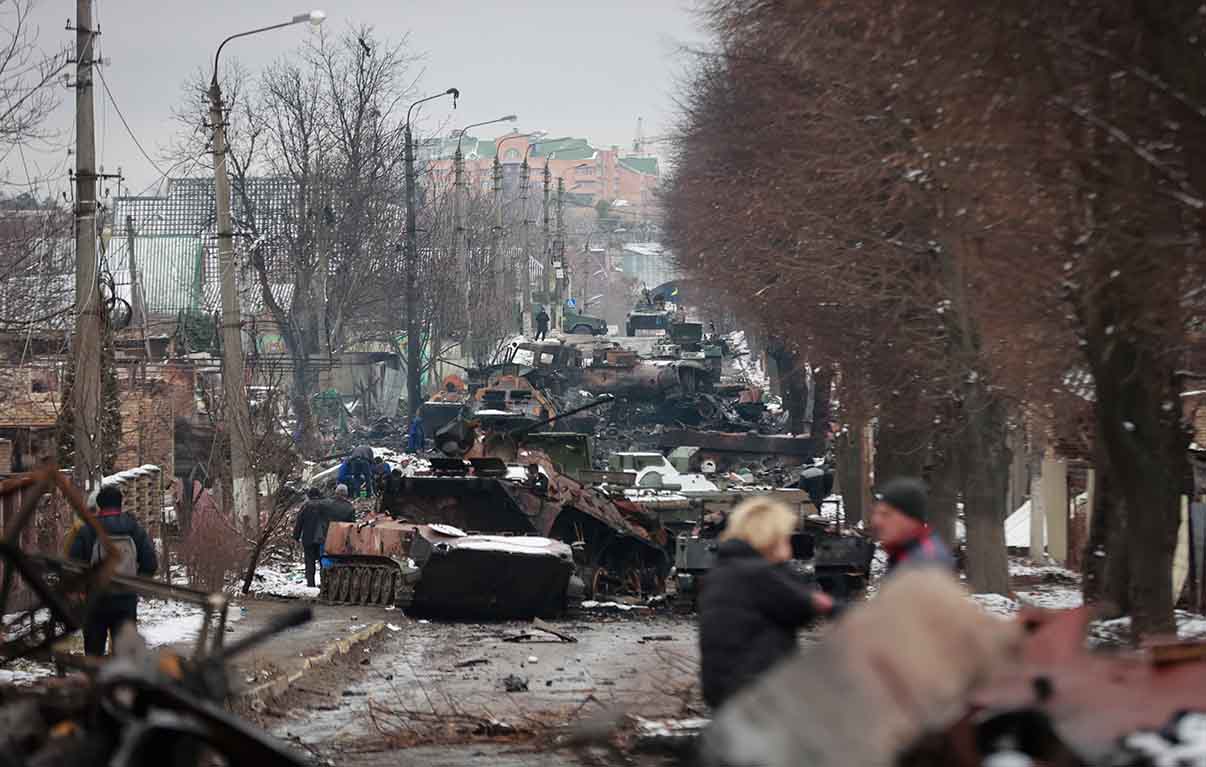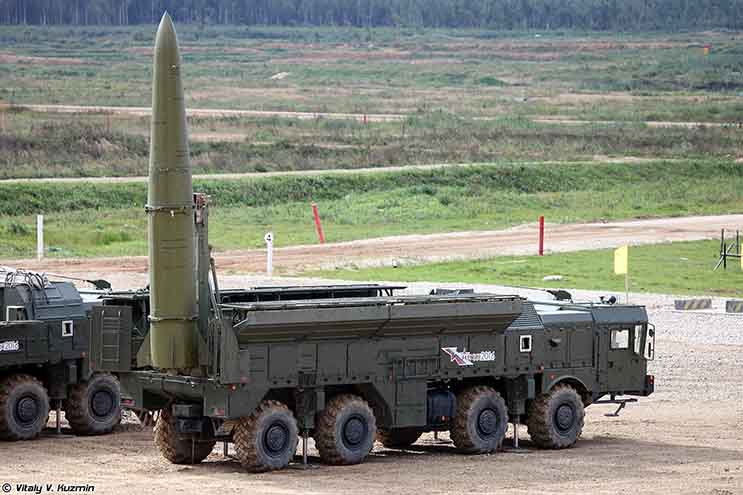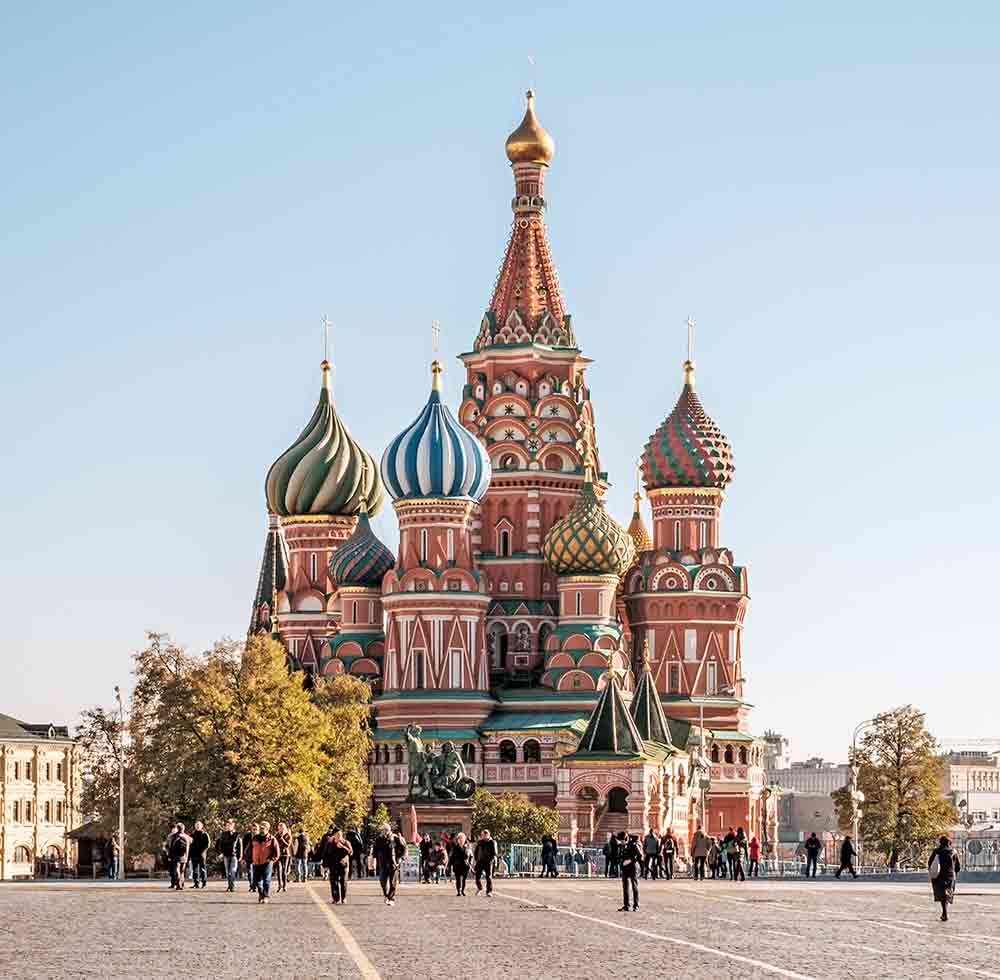Everyone knows that Russia is the largest country in the world. The area of the country is 17.1 million km² (6,612,077 square miles) and the population is (2021) 143,185,000 and is divided into urban (2018) 74% and rural (2018) 26%. According to the research, life expectancy is: men: (2020) 66.6 years, women: (2020) 78.1 years.
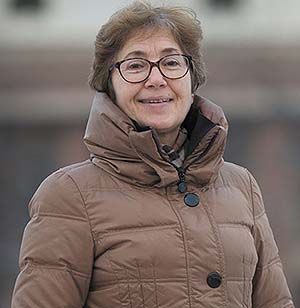
Natalia Zubarewicz, author of the term "fourth Russia" (Source: Wikipedia)
The level of stratification of Russia's society is progressing, and this is a serious problem. Prof. Natalia Vasiljevna Zubarevich, from the Department of Economics and Social Geography at the University of Moscow, in the article "Four Russias: rethinking the post-Soviet map" on the British portal "openDemocracy" from March 2012, introduces a typology of "four Russias" living side by side:
- Russia-1: big cities with billionaires and high-earning managers
- Russia-2: the working class
- Russia-3: rural and small-town community
- Russia-4: citizens in deep poverty
Living standards in the Fourth Russia
According to more recent research from 2020, 24.6 percent of Russia's population of 36 million had incomes below the national average. This means that a quarter of Russia's population can be classified as low-income, which, according to international methodology, means that they are at risk of poverty, according to a study by the international audit and consulting company FinExpertiza.

A road in Siberia (Source: Twitter)
The official Russian statistical bureau, Rosstat, has published shocking data on the living standards of Russians. They show that as many as 35 million do not have a toilet at home and as many as 47 million do not have hot water. The staggering 29 million Russians have no running water at all in their homes.
Almost two-thirds of the 144.5 million citizens of Russia live without such basic necessities in the modern world as access to sewage, electricity, gas networks or heating. According to Rosstat, this mainly concerns the provinces. Life in Moscow or St. Petersburg does not differ significantly from the living conditions in other European cities.
According to AFP (Agence France Presse, French Press Agency), about 7.7 million families heat their homes with wood. This is happening in a country that is the world's largest gas producer, with winter temperatures falling to minus 50 degrees Celsius (-53° F) in some regions.
Research results show that out of 52.8 million households, only 29.1 million (55%) have access to gas, and almost 1.5 million households have no electricity. According to them, in approx. 12.3 million households there are toilets outside the home, and 200,000 do not have them at all. More than 5 million households do not have a bath or shower.
1.3 million families still live in the so-called communal apartments — a remnant of the Soviet era. Each family in such apartments occupies a separate room and shares the kitchen and bathroom.
3,200 schools in Russia do not have normal toilets in their buildings. The chairman of the Federation Council, Valentina Matvyenko, mentioned the lack of toilets in three thousand schools, saying that it was a disgrace for Russia.

Russian school toilet (Source: Twitter)
According to the data from 2017, partially updated on the Rosstat website, the situation has not improved much. 31 percent of apartments and houses do not have hot water and 33 percent do not have access to gas. 22 percent of the housing stock has no sewage system and 14 percent has no heating at all. 18 percent have no running water.
Alcoholism
Alcoholism is Russia's greatest plague. According to the Polish Newsweek, 70 percent. men in the Far East die before the age of 35 due to chronic alcoholism and accidents caused by psychosis. According to a report by the Russian Ministry of Health, people in the Far East are being decimated by alcohol. The "Russian" pace of drinking is not easily withstood by, for example, the Chukchi or the Buryats. For many Sovietized Chukchi or Yakuts, libations often end in such a way that men run around the forest inebriated, shooting at each other or mutilating themselves. At best, paranoia and hallucinations cause a drunk Asian to "behave very inadequately," given the amount of alcohol consumed.
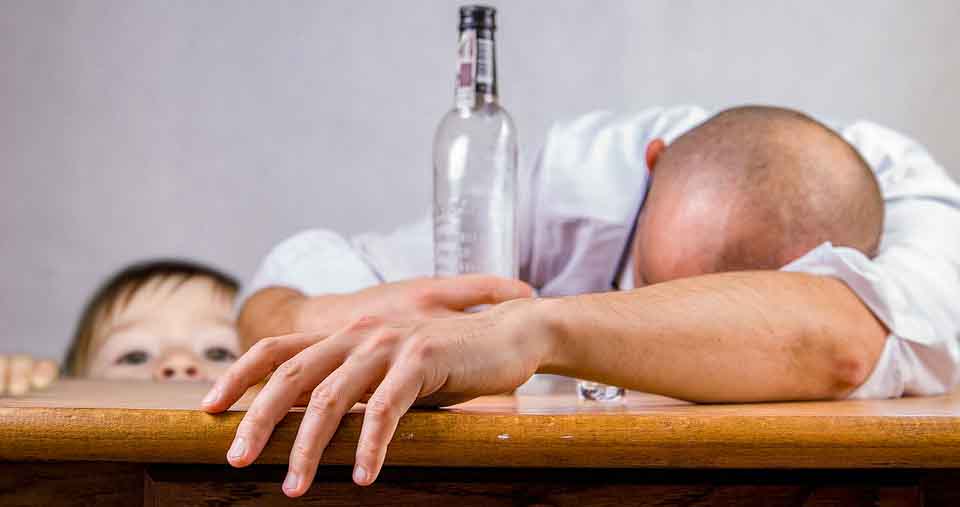
Source: Pixabay
According to the ranking, the regions most fond of alcohol are: two Far Eastern districts — Magadan in the Far East (14.1 liters of pure alcohol per head — 1st place) and the Sakhalin Oblast off the coast of the Sea of Japan (13 liters per head — 3rd place). Moscow is second (13.3 liters per person per year).
In 2009, Russian President Dmitry Medvedev declared a state of national emergency. According to the statistics at that time, alcoholism was the cause of approx. 400 thousand deaths annually in this country. The average age of men has dropped from 65 in Soviet times to 58 today. It cannot be otherwise, since a statistical Russian, including infants, drinks 14.5 liters of alcohol, in terms of pure alcohol equivalent. This is a frightening amount, but by no means the final word, as it does not take into account the massive consumption of home-made moonshine and counterfeit products.
Meanwhile, according to the World Health Organization, the threshold of 8 liters of pure alcohol per capita is tantamount to national suicide and the death of the population.
Please note that the data is very chaotic, as it depends on the political situation. The real situation can actually be much more critical.
HIV and AIDS in Russia
According to Rzeczpospolita, in 2016, a meeting of deputies devoted to the problem of HIV and AIDS in the Russian capital was held in the Russian Duma. Officially, the number of people infected with the virus has increased by more than 5 percent during the year. Nearly 870 thousand of people are conscious carriers of the virus. It is difficult to say how many people in Russia do not know yet that they have been infected. AIDS mortality has steadily increased in recent years. The UN appeals to the Kremlin to react and describes Russia as "the epicenter of the global HIV epidemic." About 1.5 million people in Russia, or 1% of 148 million Russians, are believed to be infected with HIV, some of whom are unaware of it.
At the end of 2019, the number of officially detected cases of infection among Russian citizens since the start of the epidemic was 1,424,000. 355,000 of them have died and approximately 1,069,000 are living with HIV. Of these, 776,900 are registered and monitored by medical institutions, and 535,000 are receiving antiviral therapy.
Again, providing validated data is difficult. Many times difficult cases are not registered at all.
Free Press in Russia
Although Russia claims to be a democratic country, some statistics are alarming. One of them is the state of the free media. 158 journalists were killed during Putin's reign. Thus, Russia is the fifth country in the world, after Iraq, the Philippines, Syria and Algeria, in terms of media death rate.
For many journalists, state pressure and self-censorship in fear of reprisals are commonplace in Russia. Fewer and fewer media outlets take the risk of critically informing about the government's activities. The media and journalists who oppose harsh censorship and provide facts about the war in Ukraine are facing serious consequences. On March 1, the Russian authorities blocked the broadcasting of radio Echo Moscow and TV Rain. The authorities stated that the radio provided "false information that threatened Russian citizens about the activities of Russian troops as part of the special operations in defense of the Donetsk and Luhansk People's Republics."
It is worth mentioning here the murdered eminent journalists: Anna Politkovskaya, Maksim Borodin, Yuri Szczekochikhin, Igor Dominikov, Viktor Popkov, Anastasia Baburova and Natalia Estamirova.
Conclusion
The West treated and continues to treat Russia as a democratic state. War crimes in Ukraine do not shock former Chancellor Merkel — who, along with Chancellor Schröder, was the architect of the Russia-Germany strategic partnership — and who, when the crimes were announced, was caught admiring the culture and art in Tuscany, to escape the attacks of the German press and invitations to Ukraine by Zelensky himself.
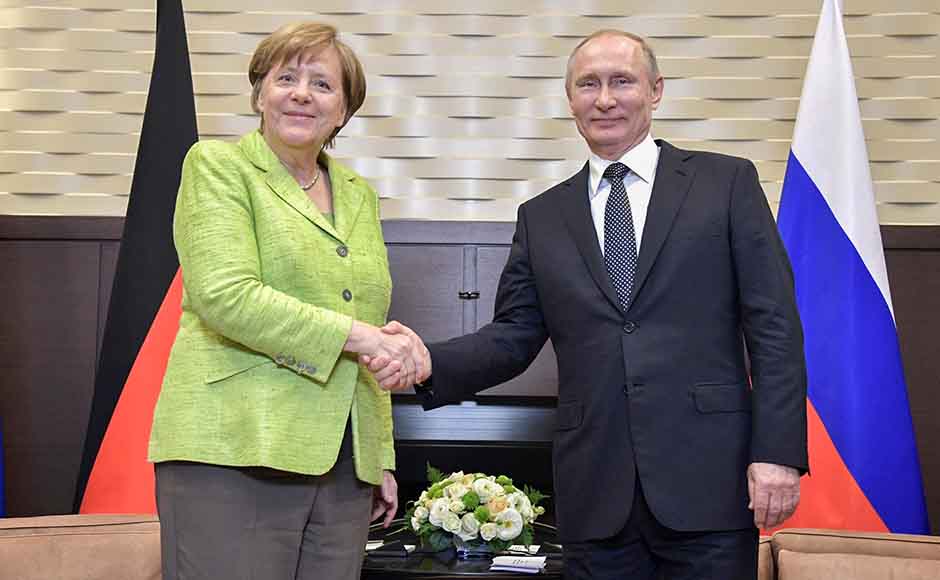
Angela Merkel and Vladimir Putin (Source: Wikipedia)
Support for Putin in Russia reached 83 percent at the end of March. It's about 12 percent. more than in the survey conducted by the research center a month earlier. The Russians today, like the Germans during World War II, are operating with almost identical rhetoric towards a total, imperial, autocratic Russia.
Let us just recall Hitler's ratings: 92%, 95%, 95%, 95%, 88% - such results (with a turnout of around 95%) were obtained by Adolf Hitler and the NSDAP in the elections and plebiscites organized in 1933 and 1934. The Germans, like the Russians today, identified with the leader's politics, just as the Russians identify with Putin's politics and propaganda.
So let us not whitewash either the Germans, nor today's Russians, because of what the overheard wives of Russian soldiers say directly: "bring in as much as possible" — which practically means kill and loot.
Translation from Polish by Andrew Woźniewicz.



